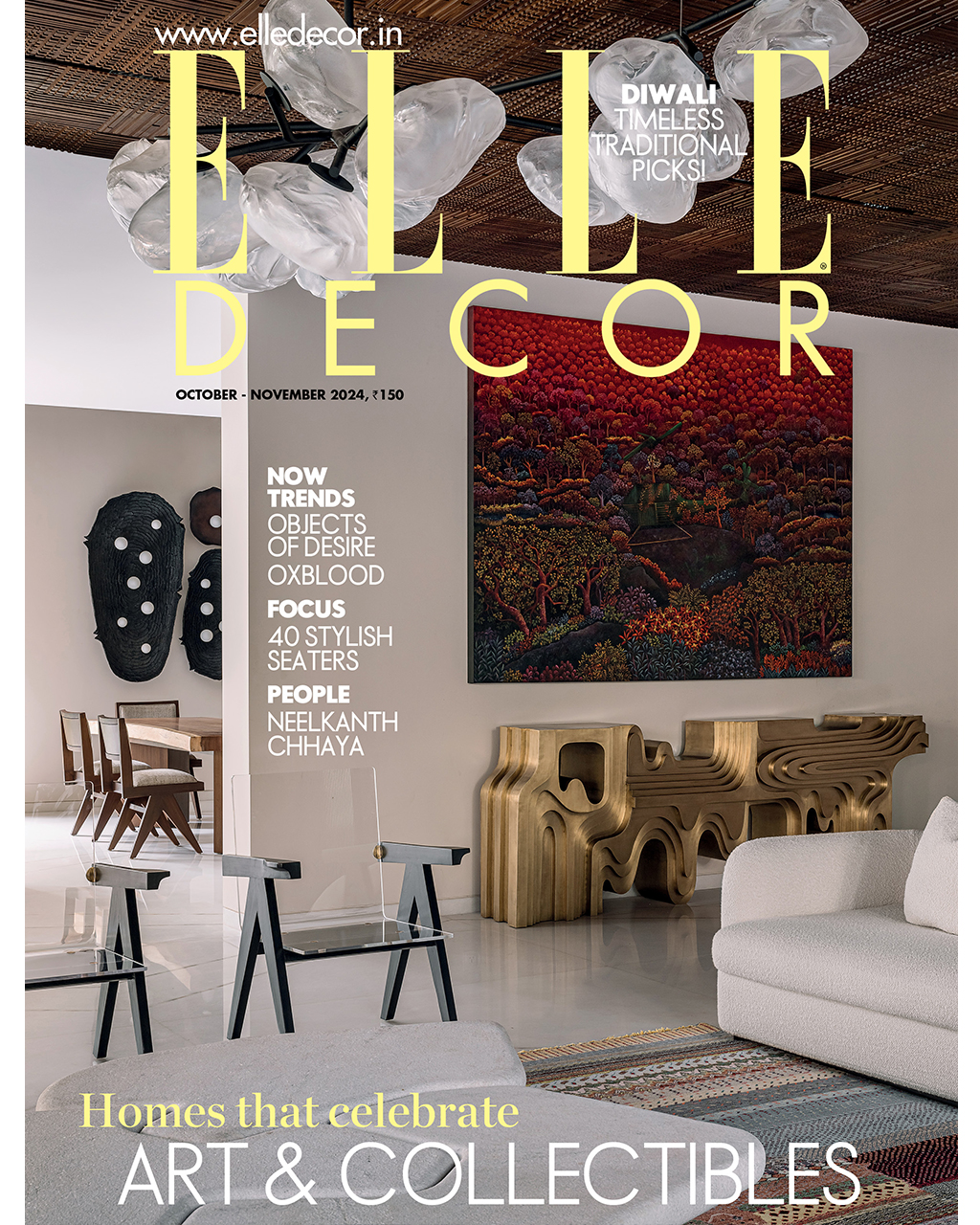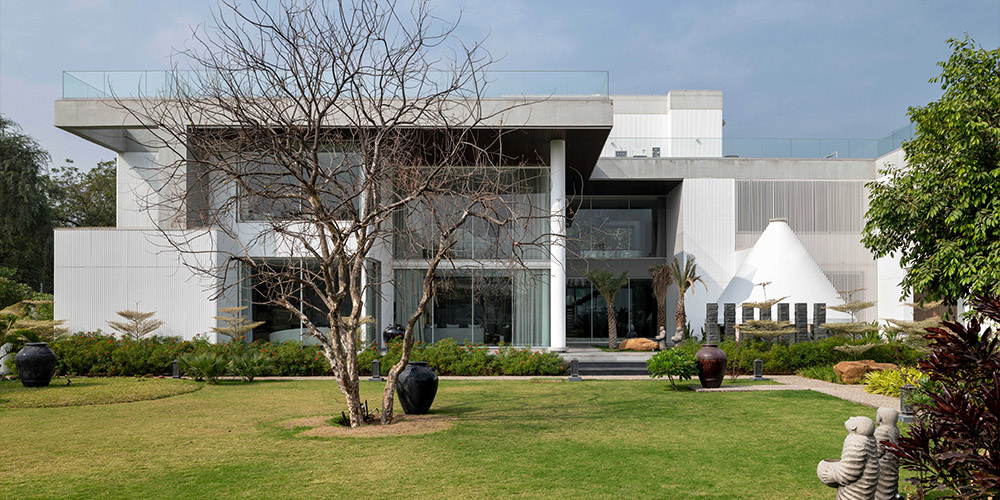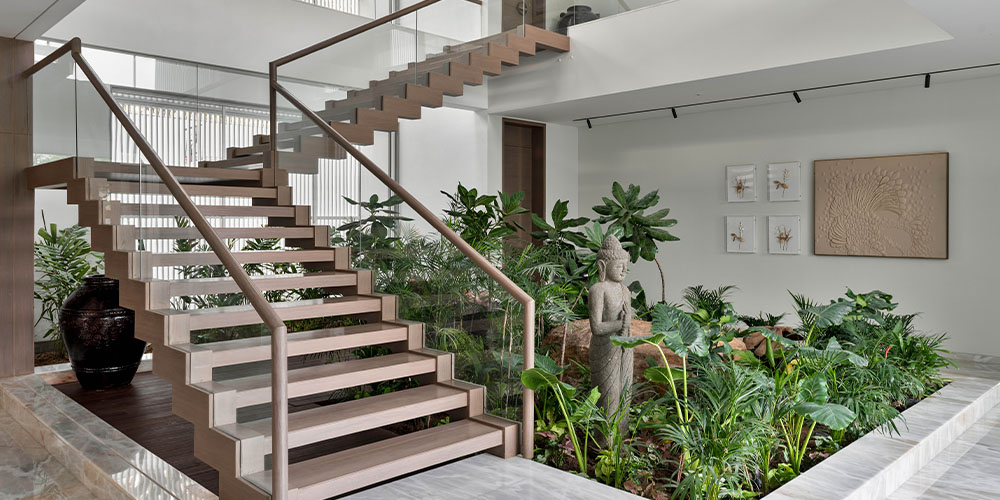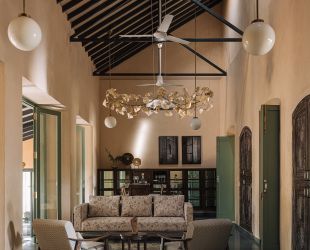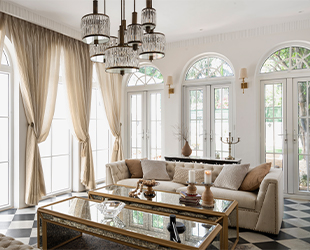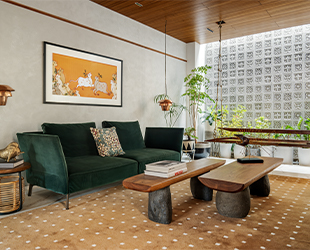Homes
tHE gRID Architects sculpt a biophilic dream in this Ahmedabad villa
AUG 2, 2024 | By Pooja Prabbhan Srijith
A deft use of a pristine all white palette, clean lines, local artefacts and architectural elements is well-evidenced within the gentle and nuanced interiors of this sprawling 20,000 sq ft multi-generational abode—challenging the typical trend of opulent, multi-storey residences in Ahmedabad.
The choice of colour palette permeates a sense of calm within this Vastu-compliant home. “It also symbolises clarity and purity, resonating with the villa’s eco-conscious ethos,” recounts Snehal Suthar, one of the co-founders and principal architect of tHE gRID Architects, further adding, “White serves as the essence, enhancing the clarity of forms and textures, thus creating an ideal backdrop for the interplay of light and shadows. This theme supports the villa’s philosophy of minimalism and sustainability, providing a canvas that reflects both cultural values and modern aesthetics.”
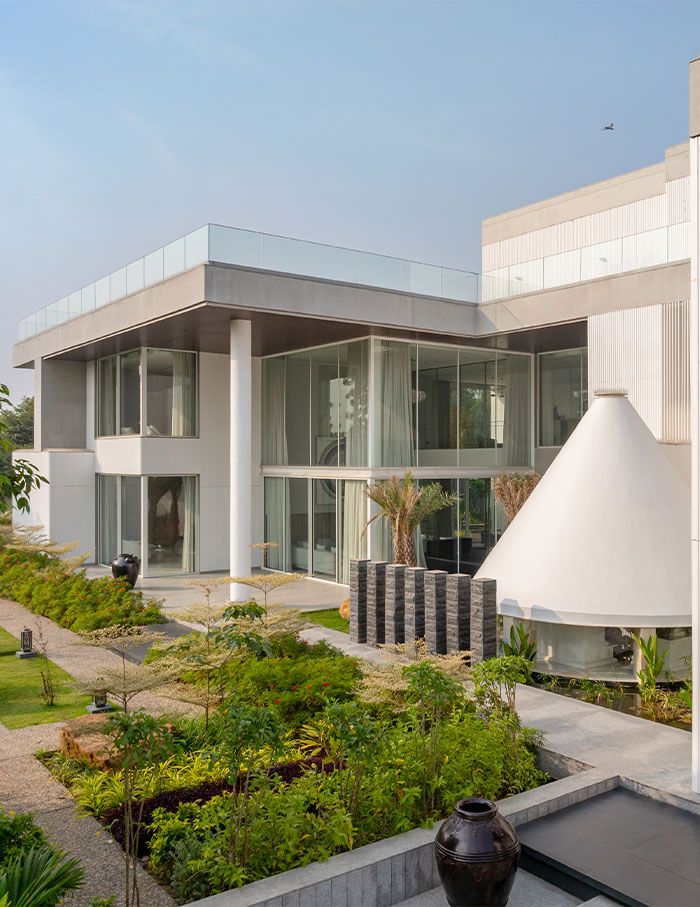
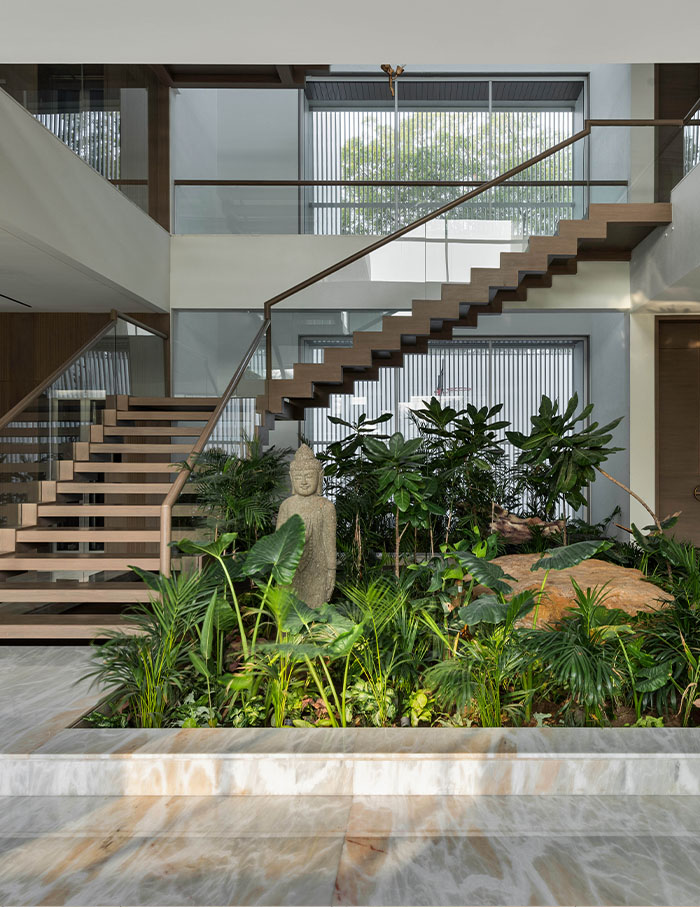
Minimalistic marvel
Located in the northeast of the plot, the entrance of the property welcomes you with its serene landscaping—a striking white façade is telling. “The main built space is consciously shifted towards the southwest, creating space in the northeast for a prayer area and green spaces,” shares the designer. The refurbishment called for significant structural decisions to strategically orient and divide the space in accordance with Vastu principles. A quick walk-through into the home takes you to an informal living room, which exudes minimalist elegance—surrounded by local and cherished artefacts with a storied past.
The house is divided into private and semi-private zones, interconnected by a central passage. Drawing inspiration from traditional Indian architecture, a central courtyard with a skylight sees an abundance of natural light—serving as a vital tool—integrating essential living spaces, such as staircases and elevators, ensuring every facet is garden-facing.

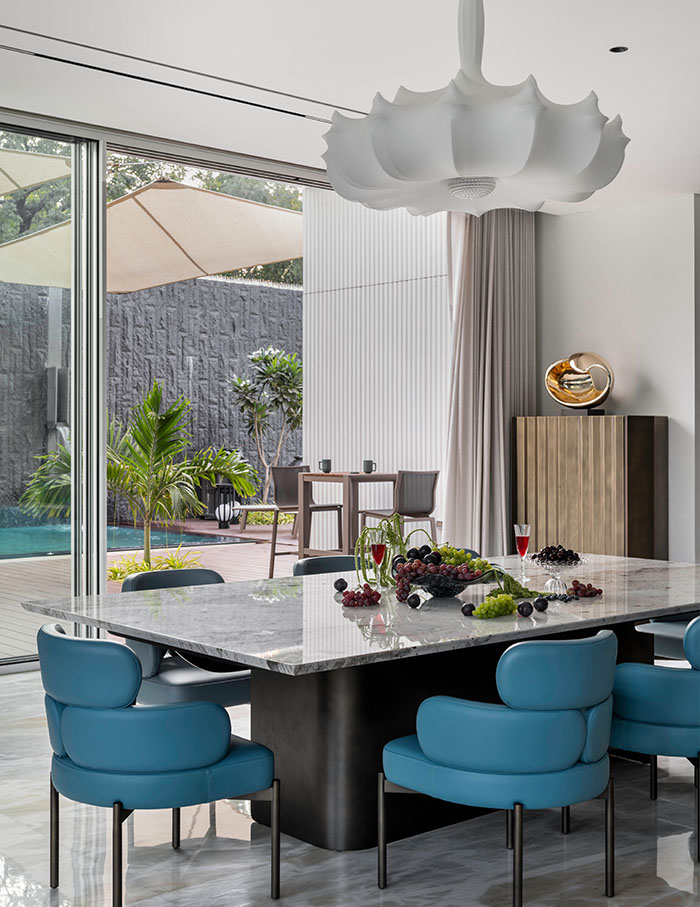

Spatial utilisation reigns supreme
The private zones of the villa are thoughtfully designed for maximum privacy. On the ground floor, there is a conveniently located bedroom, offering easy accessibility. The additional bedrooms are situated on the first floor, providing seclusion and space away from the common areas of the home.
The stairway, an architectural focal point, is bathed in natural light streaming through the overhead skylight. “This feature not only enhances the aesthetic appeal but also ensures that the passage through the villa is always bright and welcoming. Beyond the internal living areas, stepping into the main landscaped area in the front, you’ll find a gazebo. This structure offers a delightful retreat for relaxation and entertainment, surrounded by lush gardens that enhance the home’s connection with nature,” Snehal smilingly states.
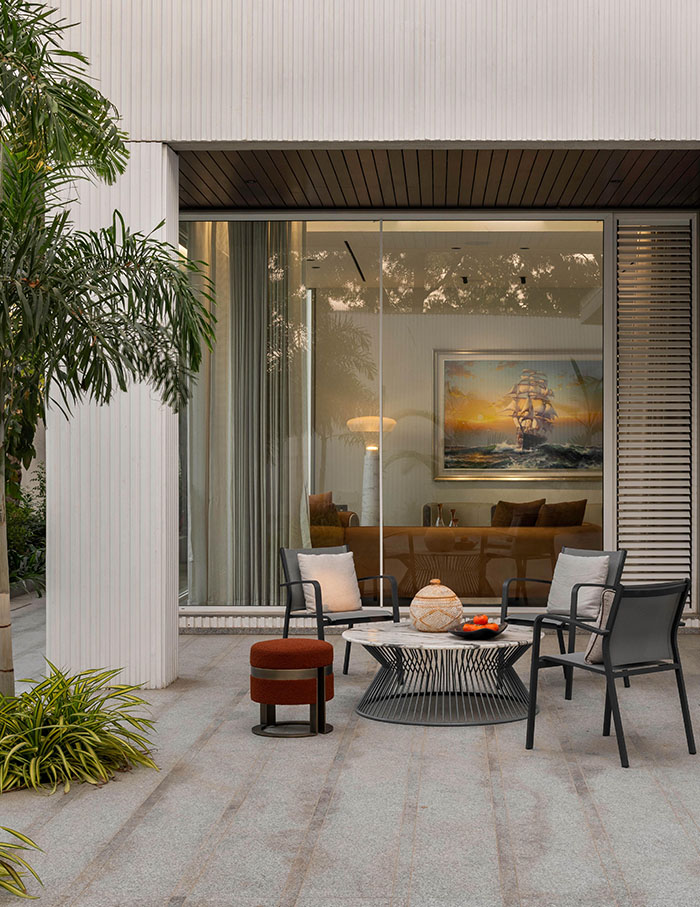
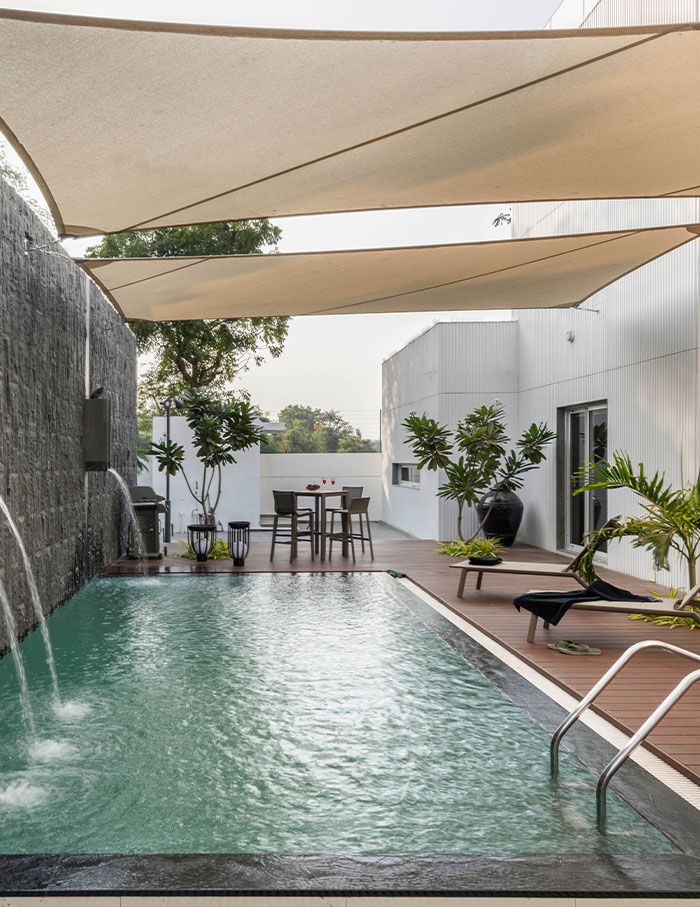
Functional sustainability
Staying true to the principles of biophilia and sustainability, the villa dedicates 70% of its total 30, 350 sq ft of plot area to unbuilt spaces, such as landscapes and gardens in order to promote biodiversity, thereby maintaining a profound connection with the natural environment.
“70% of the plot area is unbuilt. The landscape and garden promote biodiversity,” says Bhadri. “The integration of biophilic design elements, such as green roofs and landscaped gardens, enhances biodiversity and promotes well-being, while passive design strategies optimise natural light and ventilation to minimise energy consumption. The microecology of the waterbodies, natural local special of plants build their own ecosystem,” he infers.
It doesn’t take long to decipher that the design philosophy behind Shwet villa is centred around sustainable harmony—where every element responds to its environment and cultural context. And rightly so, as the use of minimalistic design in this joint familial address that fosters an environment that’s conducive to comfortable living within the climatic conditions of Ahmedabad.
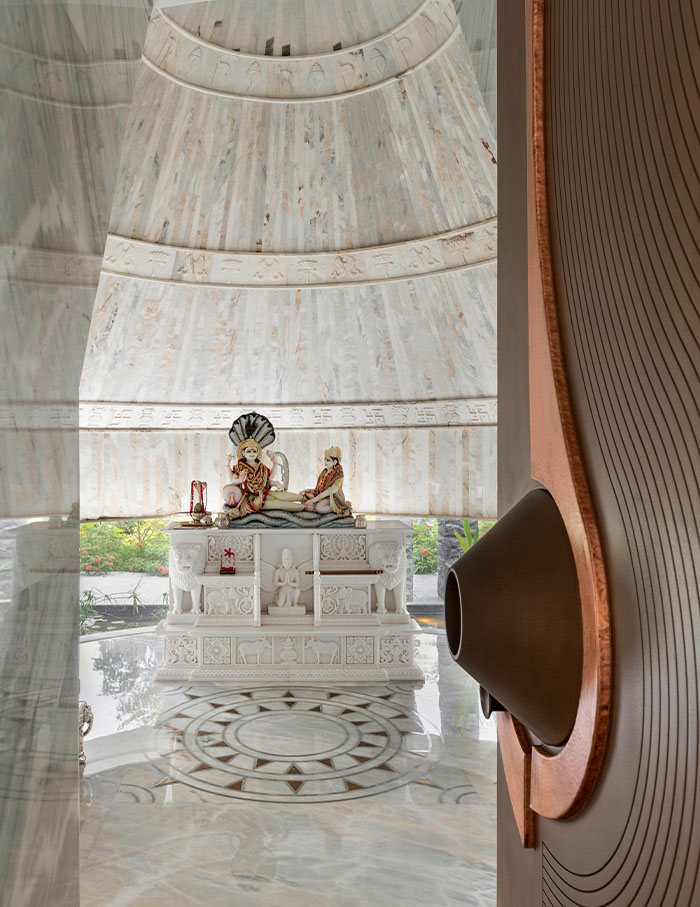
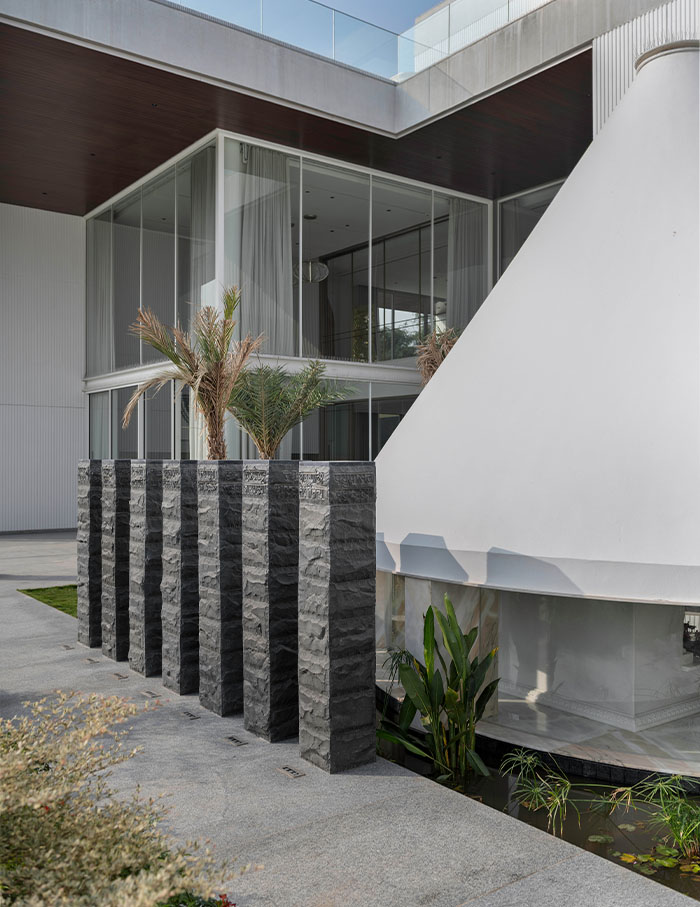
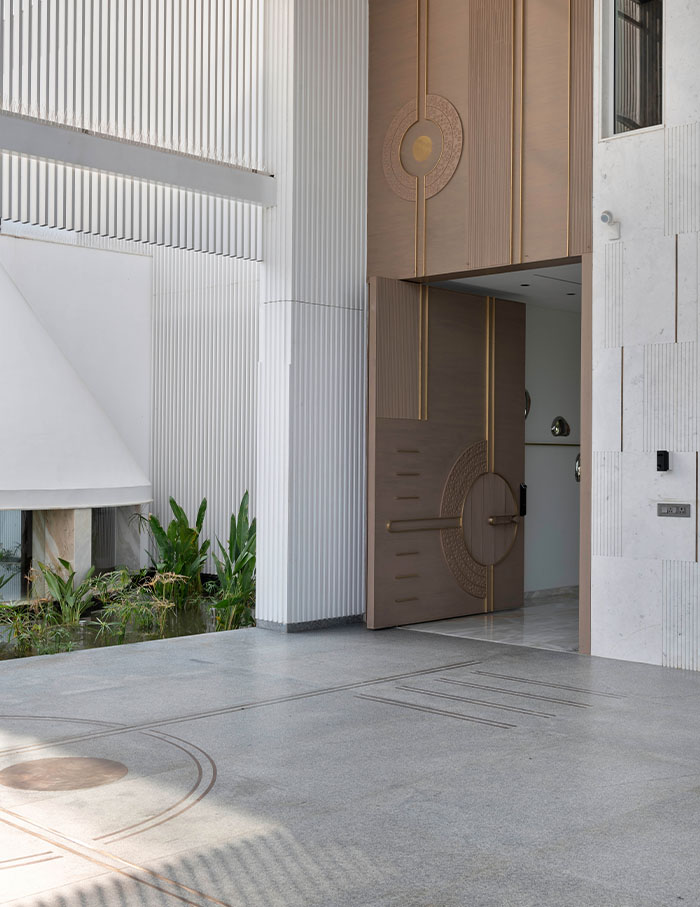
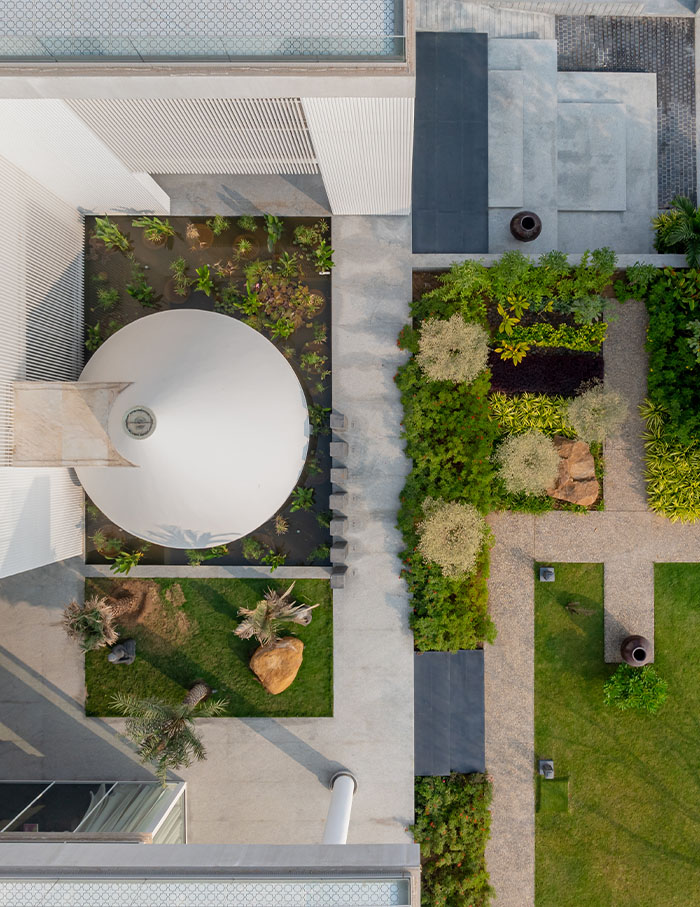
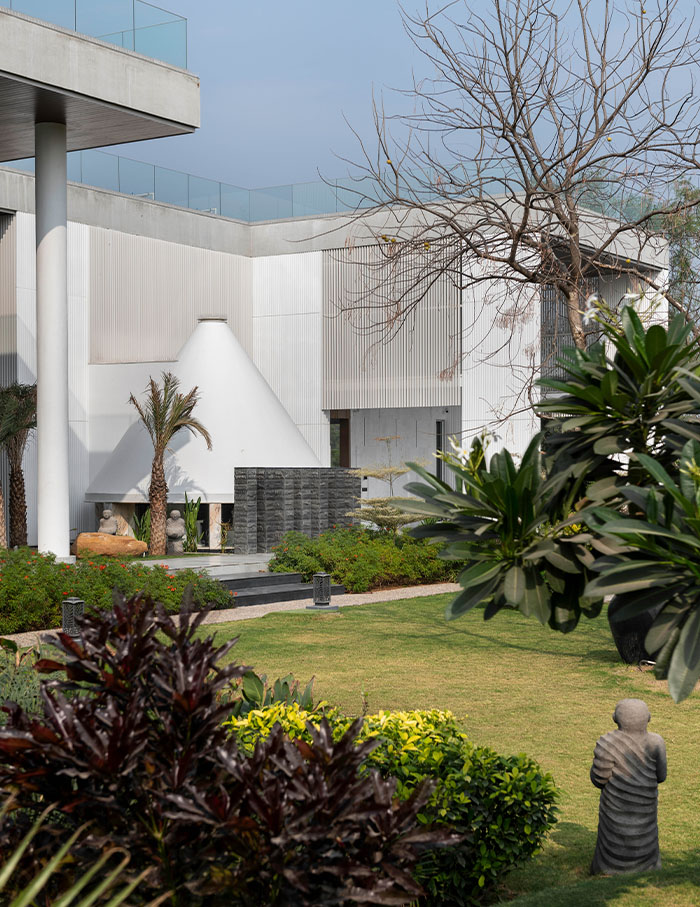
Now read: Back to the native home: This 120-year old family abode by Doro wraps an intentional emptiness

